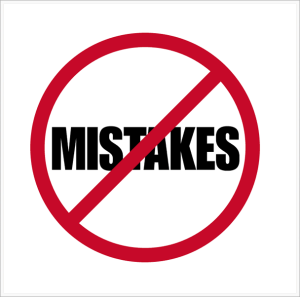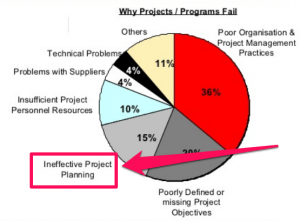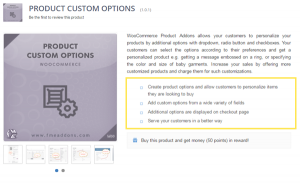It would make little sense for an organization to develop a succession management program without a defined plan for evaluating its effectiveness. But how can organizations evaluate their succession management program?
The five guidelines below provide organizations with a proven method to determine whether or not their succession management program is, in fact, working, as well as a case study of the results.
Bench strength prior to the succession management system. It is critical for those responsible for developing the succession management program to step back and ask themselves: “What is our bench strength prior to implementing a formal succession management strategy?” Without conducting a thorough review of candidate qualifications, development needs and strengths, organizations run the risk of over or underestimating the talent available in their pipeline. Key stakeholders involved in developing the succession management process should insist on research to provide a baseline from which to evaluate future success or failure.
Ongoing evaluation of bench strength. After the initial strength review, organizations should conduct a review of their bench strengths annually to identify any alterations that need to be made in the succession management system in terms of competencies and development programs. This will enable the organization to capitalize on potentially lucrative changes in the business environment.
Number of qualified, “Ready-Now” candidates. It is critical for organizations to know the number of “Ready Now” candidates in their succession management pipeline. Life is anything but predictable, and there may be situations in which a leader leaves his or her position early. Ensuring there are plenty of qualified successors in the talent pool (who are capable of assuming a leadership role in a short period of time) is critical in the succession management plan. If not, the succession management process will not work as intended and will need to be reevaluated.
Developmental improvements. A succession management program should include opportunities and avenues for frequent evaluation for candidates. Tools such as scorecards and multi-rater tools provide ways for organizations to monitor and assess the improvement of their candidates. Additionally, this system should provide all candidates in the pool the assistance they need to become “Ready Now” candidates. If not, the succession management process may need to be revised.
Organizational performance. Succession management programs are more than simply vehicles for filling key roles. These programs should enable organizations to sustain growth. When working properly, succession management programs help protect the future of an organization by providing a pipeline of qualified talent.
Case Study
A large and highly-regarded company in the U.S. wanted to improve its succession management strategy for managers. However, a closer look at the organization’s current program revealed a completely lack of strategy that could be likened to a game of playing “go fish” among the employees, with leadership simply asking around to determine whether or not the company had any qualified candidates. Very little, if any of the organization’s strategy was driven by data.
After organizing a meeting with the organization’s key leadership, our first question to them was “What constitutes success as a manager?” Their answer was “growing revenue.” However, when it came to identifying the characteristics of a manager that grow revenue, the team was unable to put their thumb on the core competencies required for success in this area.
Starting from Square 1
Given the lack of clarity surrounding the characteristics of successful managers, the team proposed a large-scale senior level job-survey study. With many of this organization’s leaders managing areas with revenue in excess of $ 1 billion, finding replacements would mean identifying candidates capable of handling a great deal of financial responsibility. Fortunately, the incumbent CEO and other senior leaders provided support for this project.
They requested participation from the senior managers and their subordinate managers.
The results of the job study revealed that overall, four leadership factors were critical for success:
- Strategic Leadership. The ability to promote innovative ideas and change as well as tackle strategic issues.
- Achievement Leadership. The ability to take the initiative to make necessary improvements to various processes.
- Team Leadership. The ability to inspire, communicate, and work well with others.
- Personal Leadership. The ability to control one’s emotions, act with integrity, and perform well under stress.
The team created a multi-rater tool (MRT) to measure these four leadership factors in their candidates. The purpose of the MRT was to:
- provide senior leaders with an index of each candidate’s performance
- form the foundation for professional development
In addition to a model of performance, the succession planning process for this particular organization required assessments that would provide objective information about a candidate’s strengths, weaknesses, and opportunities for growth and development. The team recommended three types of assessments:
1: A Big Five-based personality inventory that measured the following characteristics:
- Emotional Stability,
- Extraversion,
- Agreeableness,
- Conscientiousness, and
- Openness to Experience.
In this case, the team suggested the Hogan Personality Inventory based on its excellent reputation and supporting research.
2: A method of measuring and evaluating characteristics that cause people to fail in their careers.
While managerial failure is a big problem facing organizations, there are a limited number of psychological tools designed to identify “derailing” tendencies before they create problems for the organization. The tool recommended by the team in this particular case was the Hogan Development survey.
3: A tool to determine the candidate’s propensity for solving complex, business-relevant problems.
In this instance, the team proposed the Watson-Glaser Critical Thinking Appraisal as it has demonstrated evidence of validity in measuring these characteristics.
Though the assessment battery was brief, it provided leadership with the information they needed to provide each candidate with feedback describing what he/she did well, how to leverage strengths, overcome shortcomings, and where there was room to improve.
4: Managing the Talent You Already Have
In this particular succession management project, it was critical to determine how candidate data would be managed.
When it comes to talent management, our team’s two primary concerns were:
- Managing candidate data in a way that maximized its value to the organization
- Creating clear avenues allowing candidates to expand on their skills, knowledge, and abilities
To accomplish this, the organization created a digital talent management system that included a bank for candidate information, including each candidate’s work history, educational background, talent assessment results, performance metrics, feedback reports, and plans for development. This enabled the organization to produce summary reports on any candidate anywhere in the world regarding his or her qualifications.
5: Employee Development
Employee development is crucial in talent management. The team created links between bot the MRT and the psychological assessments, developing a simple, user-friendly process that allowed managers and candidates to identify opportunities for development. The MRT gave candidates and their supervisors insights into potential problem areas, and the assessments allowed candidates to gain a better understanding of why they needed development and what to do about it.
Monitoring and administering a system like this can be complex … really complex. However, three components provide a framework from which to understand the system:
- Evaluating candidates. The organization took on screening the candidates for educational level, job proficiencies, and experiences. The client then created a database that was then uploaded into an assessment engine online where candidates could complete each series of assessments. If a candidate forgot to complete the assessment, reminders were sent.
- Generating reports. Once candidates completed their assessments, the system then generated reports for each assessment tool, as well as a comprehensive summary outlining information gathered from all assessments taken by the candidate. Automated reports summarizing the candidate’s strengths and development needs were delivered to both the candidate and his or her manager.
- Sending data. Finally, the organization automatically received both a complete data file and feedback reports for each candidate.
How Well Did the System Work?
Once an assessment was woven into the fibers into the overall succession management plan, the new, data-driven process far outperformed the succession management committee. For example, in regards to the Strategic Leadership core competency, the assessments identified candidates who scored significantly hire (14% higher) on average than candidates nominated as “Ready Now” by the senior managers alone.
Conclusion
While creating a succession plan requires time, buy-in, and strategic effort, designing and implementing a state-of-the-art succession plan is indeed possible when organizations follow the steps discussed in this blog.
As with many sensitive and detail-laden processes, in many cases consulting a qualified expert is the most efficient way to establish a truly effective program. However, firms must proceed with caution when choosing whom to work with. It’s best to ensure any consultants a firm partners with focuses on the features specific to that particular organization. If a consultant fails to take critical nuances into consideration, the succession management system will not serve as a useful tool.
Additionally, organizations should use objective pre-hire assessments to assist in their decision making process. Decisions made with the help of data-driven tools like assessments typically deliver better, more reliable results than gut instinct. While some senior leaders may question the usefulness of these tools, one way to ease concerns that arise is to use assessments as feedback tools that can help inform the decision-making process.
Succession management is and will always be the link between the present and future of an organization. The best way to ensure success is to provide future leaders with development opportunities that are both structured and divers. Organizations who do not take the time to develop a detailed and data-driven approach risk falling behind their competitors and potentially missing promising prospects who are capable of driving their business forward.
What do you think? Leave a comment.
Business & Finance Articles on Business 2 Community(108)

![5 Ways to Evaluate the Effectiveness of a Succession Strategy [Case Study] 5 Ways to Evaluate the Effectiveness of a Succession Strategy [Case Study]](https://www.onlinesalesguidetip.com/wp-content/uploads/2016/12/5-Ways-to-Evaluate-the-Effectiveness-of-a-Succession-Strategy-Case-Study.jpg)







